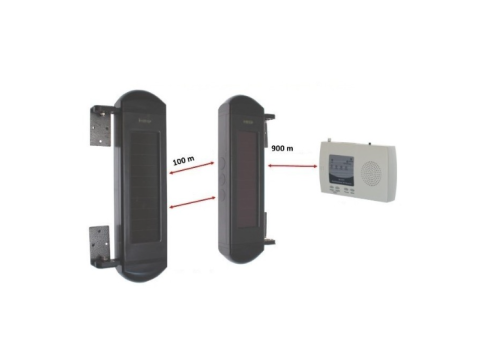Outdoor Security Alarm Systems: Keeping Your Space Safe
Outdoor security systems are essential for safeguarding perimeters and monitoring open areas. These systems use advanced sensors and technologies to detect unauthorized activities effectively. Here's a breakdown of their key features and options.
Outdoor Security Applications
Outdoor security systems focus on two primary objectives:
- Perimeter Protection: Detecting breaches at the boundary of the property.
- Tools: Beam sensors, curtain sensors, and vibration detectors.
- Open Area Monitoring: Identifying unauthorized movement within open spaces.
- Tools: Motion sensors designed for outdoor use.
Types of Outdoor Sensors
Infrared (IR) Sensors:
- Detect heat signatures crossing their path.
- Sensitive to weather conditions like fog and rain.
Microwave Sensors:
- Emit and measure radio waves, creating a detection zone.
- More resistant to environmental interference.
Vibration Sensors:
- Attach to fences or walls to detect mechanical disturbances.
Triboelectric Cables:
- Use sensitive cables that detect physical contact or tampering.
Challenges with Outdoor Installations
- Environmental Factors: Weather conditions (rain, snow, and fog) can affect sensor accuracy, particularly for infrared devices.
- Terrain Considerations: Uneven ground or vegetation may obstruct detection zones.
- Power Supply: Ensuring reliable energy sources for devices, especially in remote locations.
Wireless Outdoor Security Systems
Wireless technology simplifies the installation of outdoor alarm systems, reducing the need for extensive cabling. However, it comes with unique considerations:
- Compatibility: Ensure that sensors and receivers share the same communication protocols.
- Power Supply: Outdoor wireless devices often require batteries, which may need frequent replacement in harsh weather.
- Signal Range: Check for adequate signal coverage between sensors and control panels.
Motion Sensors for Outdoor Use
Outdoor motion detectors typically cover a broad area, with detection ranges up to 50 meters and zones up to 30 meters wide. These devices use:
- Infrared Technology for detecting heat.
- Microwave Technology for movement.
- Combination Sensors to minimize false alarms caused by weather or animals.
GSM-Based Outdoor Security Systems
GSM systems use mobile networks to transmit alerts and allow remote monitoring. While uncommon for outdoor setups, they can be adapted using:
- GSM-Integrated Sensors: Rare but possible for basic setups.
- Outdoor GSM Modules: Typically housed in weatherproof cabinets for protection.
Best Practices for Outdoor Alarm Systems
- Zone Configuration: Combine beam and motion sensors for layered security.
- Power Management: Use reliable power sources and backup batteries for continuous operation.
- Professional Installation: Consult experts to ensure proper placement and minimize vulnerabilities.
- System Maintenance: Regularly inspect and test sensors to prevent malfunctions.
Conclusion
Outdoor security alarm systems are vital for protecting perimeters and open spaces. While wireless technology offers installation flexibility, choosing the right equipment and setup is essential for long-term reliability.
For high-quality outdoor alarm solutions tailored to your needs, visit safsale.com

